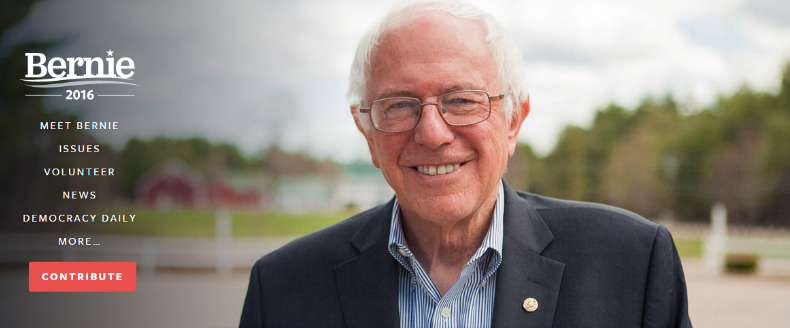Bernie Sanders is a gadfly no more. By raising almost as much money in the third quarter as Hillary Clinton, he showed that his campaign will have serious resources on-hand when we move into the primaries. At least as important as how much he raised (about $25 million) is HOW he raised it. Clinton required dozens of big-money fundraising events to hit her total, but Sanders held seven. Instead, he relied on a grassroots base: 650,000 individual voters have given him money so far, for a total over 1.3 million donations as of September 30th.
As we noted in the 2008 election cycle, online small-dollar donors can profoundly change the political fundraising dynamic:
Large donors hit their giving limits and top out relatively quickly, making them a limited resource. By contrast, small donors are the gift that keeps on giving, quite literally — Obama and other politicians who’ve assembled large online lists can go back to the same supporters over and over again. Plus, online donations help campaigns capitalize on bursts of attention and on changing conditions, since money given electronically is available for use immediately.
The last time she faced off against a candidate with a grassroots financial base, Hillary Clinton did not fare well in the end. In fact, as early as September of 2007, many of her big donors had already maxed out for the primary season. Since Obama relied on a mix of big donors AND an army of online small-dollar donors, he stayed resource-rich even when he hit serious speedbumps on the road to the nomination.
Sanders reached the million-donation mark far faster than Obama eight years ago, a sign both of his supporters’ enthusiasm and of the greater willingness of grassroots Democrats to open their wallets after years of experience of giving to candidates. The fundamentals may well still favor Clinton, but Sanders won’t languish in the cold in January — he’ll be heating up the airwaves with ad dollars. Will history repeat itself in 2016?
– cpd

